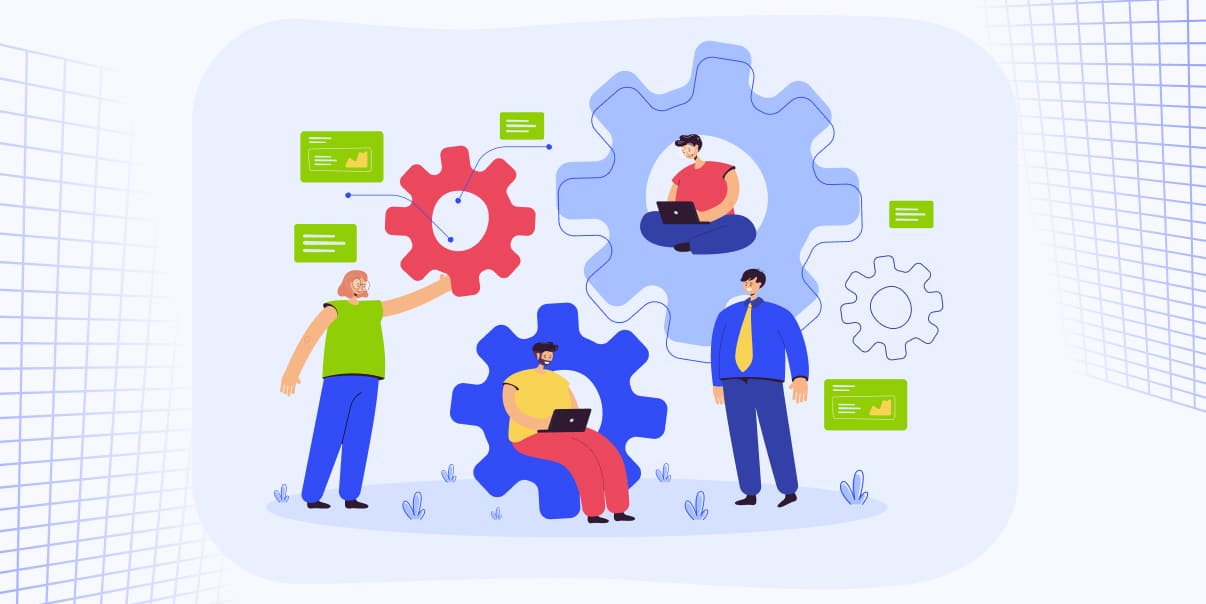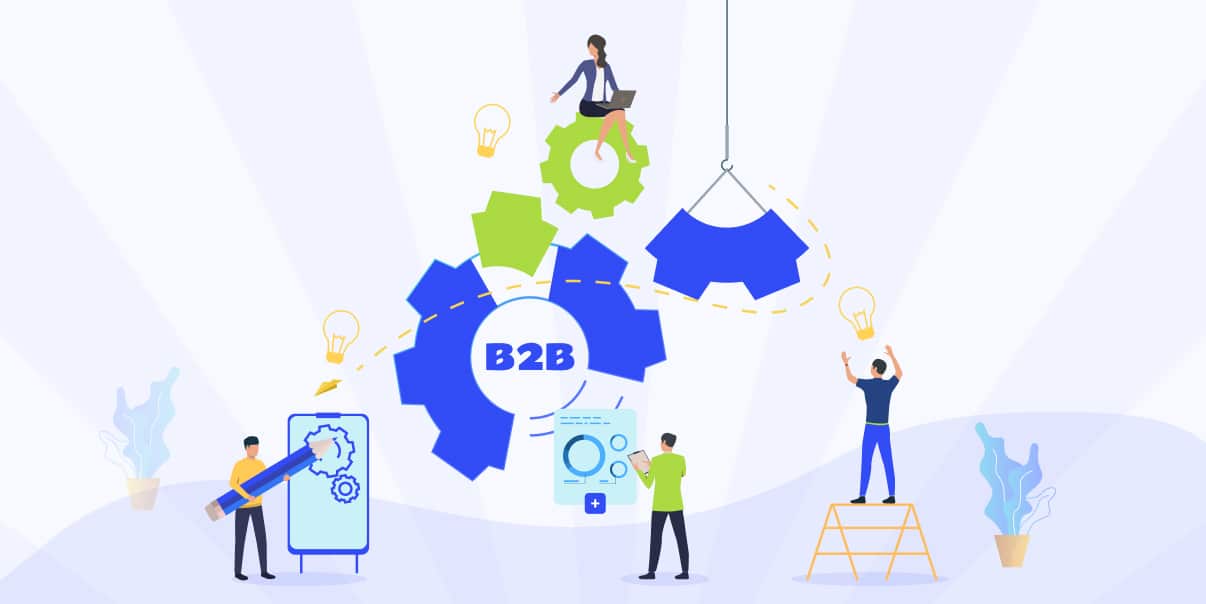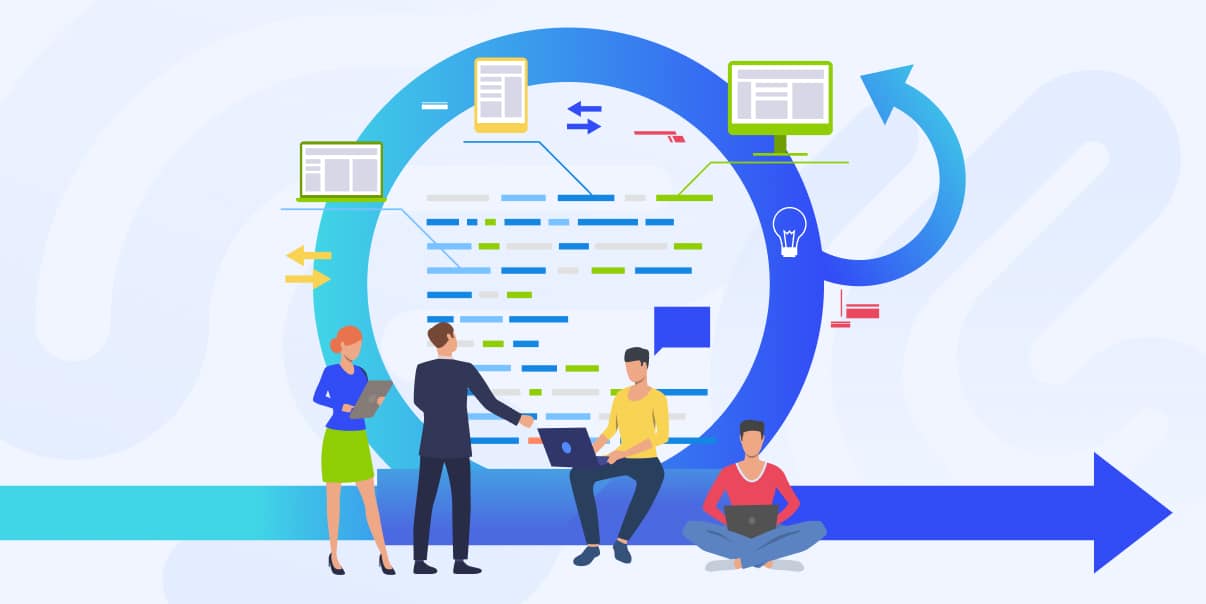System Integration: 10 Ways It Can Benefit Your Business

System integration can be used for a lot of different things. For businesses, it can make a big difference. Enterprises use it to make their work easier and more efficient. When you systematize tasks, you increase productivity and make more money.
This blog will cover 10 ways system integration can benefit your business. But before we dig deeper, let’s first define system integration.
What Is System Integration?
System integration is when you combine systems to accomplish a specific task. When you integrate two systems, they access each other’s data. As a result, you can use data from one system to trigger actions in another. Integrating systems can streamline tasks, reduce manual labor, and improve customer service.
Here is an example. A business may integrate its enterprise resource planning system with its payroll system. This way, they can easily see information about employees in a standard data format.
System integration is vital for businesses today. By integrating various systems, companies can get results more quickly and accurately. This way, businesses can work smarter. They don’t have to spend all their time on tiring manual processes.
Benefits of System Integration in Modern Technology

System integration has become a more common way for businesses to work. Here are some benefits of system integration:
Improved Data Accuracy and Consistency
Having a system for doing things means you are less likely to make mistakes, and it saves time. For example, suppose you connect your time-tracking system to your accounting software. In that case, you are also sharing the data from each system. Data integration makes it easier to see how much your employees’ salaries will be.
Enhanced Efficiency and Productivity
When you integrate your system, it is easier to finish tasks. Automation helps you do things more quickly and easily. You don’t have to spend time going back and forth between systems. This way, everyone can work better and get more done.
Increased Automation and Streamlined Processes
System integration increases automation and streamlines processes by connecting systems. It enables them to share data and work together. It automates tasks that people have to do by hand. Hence, it makes business operations faster and more accurate.
Greater Flexibility and Scalability
System integration makes it easy for organizations to add or remove parts as needed. This way, they can respond quickly to changes in their business. They can also scale up or down depending on the situation.
Improved Decision-making Through Data Analysis
System integration gives you access to the data you need so that you can analyze it. This way, you can identify trends, analyze customer behavior, and measure the success of different strategies. It lets you make better decisions based on what the data says instead of just guessing.
Better Customer Service and Communication
When you do system integration right, customers get a better experience. With integrated systems, customer service reps can quickly pull up customer information and respond to inquiries quickly. This way, customers don’t have to wait for their queries to be resolved.
Reduced Operational Costs
An integrated system can help you save on manual labor and other costs. It eliminates redundant processes. This way, businesses can focus their resources on more critical tasks. Automation reduces the need for manual labor, resulting in reduced operational costs.
Increased Revenue and Business Growth
An integrated system leads to more efficient processes, resulting in increased revenue. It can also facilitate business growth by enabling data analysis. You can use it to increase customer satisfaction, leading to more repeat customers.
Improved Collaboration and Communication Across Departments and Teams
Systems integration allows teams to access data and communicate across departments. Through electronic data interchange, teams can share data quickly and easily. It streamlines communication and collaboration. As a result, teams can work together more effectively.
Enhanced Security and Data Protection
Integrated systems provide access to data from multiple sources. This way, you can store sensitive information in a single system. It will be easier to track who has access to what and when.
The benefits of integrated systems are clear. It provides a better way to do business and helps businesses stay competitive. Think about how system and IT integration can help your business today and take advantage of its power. You’ll be glad you did!
What Are the Types of System Integration?
Different types of systems integration exist. Let’s take a look at what they are.
Cloud Integration
Cloud integration lets businesses use apps built into the cloud. This way, companies can get data from different places. Cloud integration enables information sharing across different apps, resulting in better workflow management.
Legacy System Integration
Legacy systems integration connects an organization’s internal systems to newer apps. This model allows the organization to use its existing systems along with new technologies. Plus, it helps companies stay updated with the latest tools and techniques.
Enterprise Application Integration (EAI)
Enterprise application integration lets different applications talk to each other and share data. Companies can connect their applications and databases without needing someone to hand-code everything. EAI eliminates the risk of losing data and provides a secure way to transfer information.
Database and Data Warehouse Integration
This type combines databases, data warehouses, and other systems to manage large amounts of data. This model will help you collect and store data for analysis and reporting purposes. It allows organizations to access data from multiple sources. This way, they can make informed decisions based on accurate information.
Process Automation and Orchestration
You can automate tasks by writing scripts that handle repetitive steps. For example, you can automate data entry or file transfers. You can also set up triggers to execute a script when certain events occur. Automating manual tasks helps things run more smoothly. At the same time, it frees up resources for more critical work.
API Management
API management helps organizations control and integrate their APIs. This model allows for better control over how you use and access APIs. It provides a better way for developers to build apps with integrated features. API management also offers more visibility and control over the APIs’ performance. You can deploy and scale new services with API management tools while maintaining security.
Technology & Network Infrastructure Integration
This type of integration connects different networks, technologies, and applications. Also, it helps in creating a single infrastructure for managing the entire system. This model reduces complexity and improves scalability. This way, businesses can quickly respond to changes in their environment.
Device and Platform Integration
Device and platform integration means that devices, applications, and platforms can work together. This model lets different parts of a system share data with each other. It makes things easier to use and more secure. This type of integration allows organizations to use existing technologies in new ways. It lets them integrate with solutions from other companies without much effort or changing things to fit.
Business Process Management (BPM) Integration
Business process management integration helps businesses improve their core business functions. This model lets you gather information on how well your processes work. BPM integration makes it easier to collaborate and see what is happening with the business.
Point-to-point Integration
Point-to-point integration is a system integration technique that involves connecting two systems directly. It helps organizations to connect data between systems, allowing for greater flexibility and scalability. Point-to-point connections eliminate the need for custom coding or additional software development.
Star Integration
Star integration is another name for the hub and spoke model. This model connects multiple systems to one central system. It allows organizations to connect applications without creating a complex user interface.
Business to Business (B2B) Integrations
Business-to-business integration means that different businesses can share information with each other. This system integration model is done by connecting their systems to transfer data automatically. It is essential because it helps you run your applications more smoothly. As a result, it reduces the chance of mistakes and saves time.
System Integration Methods
There are multiple methods for integrating different systems. Here are the three options:
Horizontal Integration or Enterprise Service Bus (ESB)
Horizontal integration helps organizations connect multiple systems that work together. This integration method facilitates data exchange between systems and provides a central hub for them to work together. Enterprise service bus helps organizations gain more insights into their operations by allowing them to leverage data from multiple sources.
Vertical Integration
Vertical integration is when a business owns different parts of the supply chain. This method allows the company to have more control and be more efficient. It also improves quality, resource sharing, and customer service. You will often see vertical integration in industries where the product has many parts that need to work together.
External Integration
External integration connects your system with other companies, data sources, and partners. This integration method lets businesses get data they might not have access to internally. It also allows companies to communicate better and share data more securely. Companies commonly use external integration for CRM systems, e-commerce platforms, and enterprise applications.
Approaches to Systems Integration
Here are the various approaches you can use when integrating different software.
- Top-down Approach
The top-down approach is the most common way to integrate a system. You look at the whole system, then break it down into smaller pieces. Once you have all the small details, you put them back together again. This approach helps you understand everything and ensure each part works correctly.
- Bottom-up Approach
The bottom-up approach is the opposite of the top-down approach. This system starts from the ground up by looking at individual components. Then, it figures out how they work together. It helps you create a plan tailored to your needs, and you can modify it as needed.
- Middle-out Approach
The middle-out approach is a combination of the top-down and bottom-up approaches. It first looks at the whole system and then breaks it down into individual pieces. After that, you look for areas where you can improve to create a system that meets your needs.
- Hybrid Approach
The hybrid approach is the combination of all three system integration approaches. It combines the top-down, bottom-up, and middle-out approaches. Then, it creates a system that works for your needs. The hybrid integration platform considers individual components and the system as a whole.
Challenges With System Integration
System integration makes things easier and a lot more efficient. But it comes with some drawbacks too. Here are the challenges you can come across with system integration.
Complexity of Integration
Integrating different systems can be tricky because you must ensure that each piece works together. It requires a lot of testing, and it can be time-consuming. You need to know the systems you are working with to integrate them successfully. It requires a good understanding of the system and its components.
Difficulty in Maintaining Compatibility and Consistency
Integrating multiple systems means that you have to make sure they remain compatible and consistent. It can be hard when the software changes over time. You need to monitor them and make adjustments as needed. Otherwise, the system will become outdated quickly and won’t work correctly.
Risk of Data Loss or Security Breaches
Another challenge is the risk of data loss or security breaches. This problem can happen if you don’t set up the system integrator correctly. It may also occur when you update one system but not the other. To avoid this issue, you should have a backup plan to ensure that data is secure and protected.
Difficulty in Ensuring Seamless Integration
Another challenge is making sure that the integration is seamless. You want to ensure that all systems work together smoothly without glitches or bugs. Doing so can be complex business logic. But it’s worth doing for successful software integration.
High Initial Investment
The most significant challenge of system integration can be the high initial investment. You need to purchase the necessary software and hardware for the integration. This cost can be a barrier for businesses.
It’s essential to be aware of these challenges. This way, you can plan and ensure your system integration is successful. With proper planning and preparation, integrating systems can be your best asset.
Best Practices for System Integration
Here are some best practices to help make your system integration smoother.
- Establish Clear Goals and Objectives
Set clear goals and objectives when you implement system integration. Doing so directs you to what you’re trying to achieve. It will help keep everyone on the same page and ensure everything runs smoothly.
- Devise a Realistic Implementation Plan
Develop a realistic implementation plan that will take into account any potential challenges. Think about the timeline, budget, and resources needed to complete system integration.
- Maintain Accountability Throughout the Process
Make sure you hold everyone accountable for their tasks in the system integration process. Doing so will help the process move forward and ensure that the system works as expected.
- Test and Monitor Regularly
It is essential to test the system often and ensure it works well. Check different parts of the system to see if everything is running smoothly.
- Ensure Security and Reliability
Systems integration can be a risky process. You should ensure you’re taking steps to keep the system safe and reliable. This practice includes checking things like access controls and authentication protocols.
Conclusion
System integration can be a great way to improve efficiency and save time and money. But it is imperative to be aware of any potential problems that might occur. You must take the necessary steps to ensure that the system works well. System integration can significantly benefit businesses by following best practices.
Some businesses need help combining different types of systems. BIT Studios creates custom solutions to help companies fit various systems together. Contact us today to learn more about how system integration can help your business grow.
We look forward to hearing from you!
We’re BIT Studios!
At BIT Studios we specialize in designing, building, shipping, and scaling beautiful, usable products with blazing-fast efficiency



